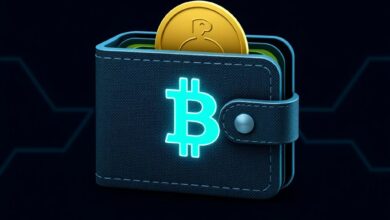Crypto terms dictionary for beginners

To navigate the intricacies of blockchain technology, familiarize yourself with key concepts. A solid grasp of terminology enhances your capacity to engage in discussions and make informed decisions.
Blockchain serves as the backbone of decentralized networks, allowing secure, transparent transactions without intermediaries. Recognizing its significance is fundamental for anyone interested in this field.
Utilize a crypto glossary to decode unfamiliar phrases. Terms like “smart contracts,” “wallets,” and “mining” represent critical components of this ecosystem. Each definition reveals insights into how digital assets function and interact.
Staying updated on these definitions can empower you to participate actively in conversations and investment opportunities, ensuring that you remain informed about market developments.
Understanding Blockchain Technology
To grasp blockchain, focus on its core attributes: decentralization, transparency, and immutability. Each transaction is recorded in blocks, linked sequentially to form a chain. This ensures that once data is added, it cannot be altered without consensus from the network.
Decentralization eliminates the need for intermediaries. Instead of relying on a central authority, control is distributed across all participants. This enhances security and reduces the risk of single points of failure.
Transparency allows participants to view the entire transaction history. Every node in the network has access to the same information, promoting trust among users who can independently verify transactions.
Immutability guarantees that once data is written to a block, it remains permanent. This characteristic is crucial for applications such as supply chain tracking or voting systems where integrity is paramount.
The technology employs cryptographic techniques to secure data. Each block contains a unique hash of the previous block, forming a secure link between them. Any attempt to alter a block would change its hash and break the chain, alerting the network to fraudulent activity.
To explore this subject further, familiarize yourself with related concepts such as smart contracts and distributed ledger technology (DLT). Smart contracts automate processes by executing agreements when predetermined conditions are met. DLT enhances collaboration by allowing multiple parties to maintain shared records without centralized oversight.
Incorporate these insights into your financial strategies and discussions with peers in the investment community. Understanding blockchain’s implications can lead to informed decisions in an increasingly digital marketplace.
Key Cryptocurrency Types Explained
Familiarize yourself with the primary categories of digital currencies: Bitcoin, altcoins, and tokens. Each type serves distinct purposes within the blockchain framework.
Bitcoin is the first and most recognized form of virtual currency. It operates as a decentralized alternative to traditional money, primarily used for peer-to-peer transactions. Its limited supply of 21 million coins contributes to its value retention over time.
Altcoins encompass any cryptocurrency other than Bitcoin. These include Ethereum, Ripple, and Litecoin among others. They often introduce innovative features such as smart contracts or faster transaction speeds. Understand that their volatility can be higher due to market speculation and varying use cases.
Tokens represent assets or utilities on a specific platform, usually built on existing blockchains like Ethereum. They can signify ownership in a project (security tokens) or provide access to services (utility tokens). Research individual projects thoroughly before investing, as they are subject to different regulations compared to traditional cryptocurrencies.
Utilizing this knowledge will enhance your understanding of the crypto glossary and assist in making informed decisions within this digital financial landscape.
Decoding Wallets and Exchanges
Understanding the difference between wallets and exchanges is pivotal for anyone engaging with blockchain technologies.
- Wallets: These are software or hardware solutions that store private keys, allowing users to manage their tokens. They come in various forms:
- Hot Wallets: Connected to the internet; convenient for daily transactions but more susceptible to cyber threats.
- Cold Wallets: Offline storage options like USB drives; offer enhanced security against online hacks.
Select a wallet based on your usage frequency and security needs. For long-term holding, cold wallets are preferable.
- Exchanges: Platforms where cryptocurrencies can be bought, sold, or traded. They facilitate transactions using fiat currencies or other digital assets:
- Cex (Centralized Exchanges): Operated by companies; user-friendly interfaces but require trust in a third party.
- Dex (Decentralized Exchanges): Peer-to-peer trading without intermediaries; greater privacy and control over funds, but potentially steeper learning curves.
Select an exchange based on whether you prioritize convenience or control. Always research fees, supported tokens, and security measures before committing.
A proper understanding of both wallets and exchanges empowers users to engage more safely within the cryptocurrency ecosystem. Make informed decisions aligned with your financial goals and risk tolerance.
Navigating Market Trends and Analysis
Analyze price charts regularly to identify patterns and fluctuations in token values. Utilize tools such as moving averages, Relative Strength Index (RSI), and Bollinger Bands for better insights into market dynamics.
Follow reputable financial news sources and social media platforms dedicated to cryptocurrency updates. Pay attention to sentiments expressed by industry leaders, as they can significantly influence market movements.
Study historical data of various tokens to understand past performance during similar market conditions. This analysis can reveal potential future trends and help in making informed trading decisions.
Engage with community forums and discussions where traders share strategies and observations. These interactions can provide a broader perspective on current events impacting the blockchain ecosystem.
Keep track of regulatory developments that could affect specific tokens or the entire market. Changes in legislation often lead to rapid price adjustments, making it crucial to stay informed.
Consider diversifying your portfolio across different tokens to mitigate risks associated with individual investments. A well-rounded approach can protect against volatility inherent in this sector.
Finally, always apply risk management techniques such as setting stop-loss orders. This practice helps safeguard investments against unexpected downturns while capitalizing on profitable opportunities.







